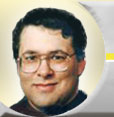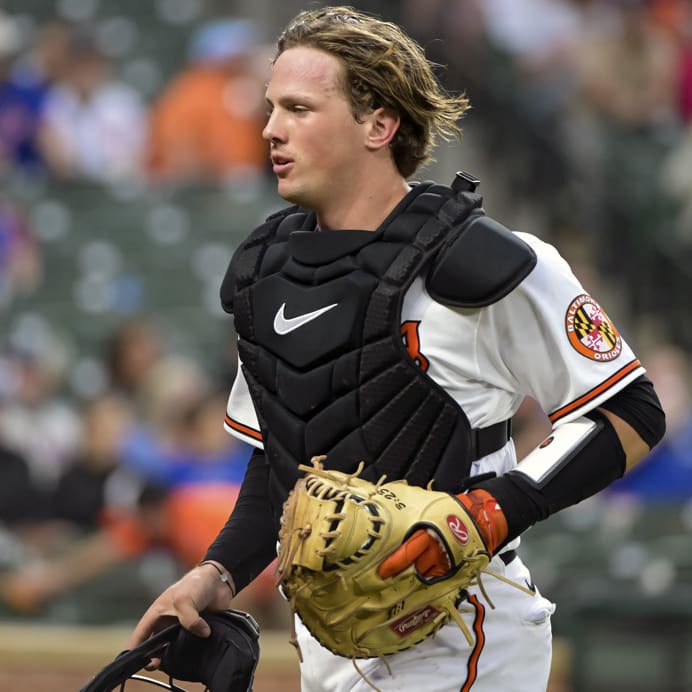This article is part of our John Sickels' Column series.
Supplemental First Round Analysis
Here is more draft pick analysis for your entertainment and enlightenment:
33. Mariners: Steve Baron, C, Florida HS
Baron is an excellent defensive catcher, possibly the best in this year's class. He didn't go in the first round due to questions about his bat (he has holes in his swing), as well as a strong commitment to Duke. Going this early, he's likely to sign and pass up college. His glove alone will get him to the Show eventually, but whether he's a starter or a backup will depend on how his offense evolves.
34. Rockies: Rex Brothers, LHP, Lipscomb
Considered to be a first-round talent for most of the spring, Brothers has a tremendous 93-97 MPH fastball, as well as a plus slider. His command is erratic, and that was enough to keep him out of the first round, if just barely. However, his ceiling is among the best of all pitchers in the draft, making him a potential steal if his command comes along. He went 5-5, 3.26 with a 132:43 K/BB in 94 innings this spring, with 74 hits allowed.
35. Diamondbacks: Matt Davidson, 3B-1B, California HS
Scouts love Davidson's raw power, but he has issues with plate discipline, and his lack of speed and range will likely move him to first base. He does have a strong arm, giving him an additional tool to go with his impressive power. He has a scholarship to Southern Cal, but should be signable at this point in the draft. He'll need development time.
36. Dodgers: Aaron Miller, LHP, Baylor
Miller was a two-way player at Baylor, posting a 5.12 ERA with a 65/26 K:BB in 51 innings on the mound, but hitting .310/.415/.548 with 12 homers when playing the outfield. The Dodgers want him on the mound, to take advantage of his fresh 90-94 MPH fastball. He's a bit raw for a college pitcher and will need to refine his breaking stuff, but his arm doesn't have a lot of miles on it, and the Dodgers look for overall athleticism in their pitchers. He fits the bill.
37. Blue Jays: James Paxton, LHP, Kentucky
Paxton's ugly 5.86 ERA is deceptive: it was actually about average for the context in which Kentucky plays; his 115:20 K/BB in just 78 innings is more indicative of his talent. Scouts love his low-to-mid-90s heat, and his curveball is also a plus pitch. His main problem this year has been vulnerability to the home run, but the Jays couldn't resist his stuff and his ability to dominate in stretches.
38. White Sox: Josh Phegley, C, Indiana
Phegley hit .344/.456/.633 with 17 homers for the Hoosiers, and offered one of the most polished bats at the college level. Not everyone believes his power will translate to wood, and his defense behind the plate is more "pretty good" than excellent, but in a draft bereft of college hitters, he stood out as a prime target.
39. Brewers: Kentrail Davis, OF, Tennessee
As a draft-eligible sophomore, Davis has extra leverage, though it seems doubtful the Brewers would have selected him if they didn't think he was signable. Compared to a left-handed hitting Kirby Puckett for his short, muscular build, Davis hit just .308/.424/.528 this spring, adequate for his context at Tennessee but not as good as scouts expected. It will be very interesting to see how negotiations progress. If he returns for his junior year and breaks out, he would be a top 10 candidate next spring.
40. Angels: Tyler Skaggs, LHP, California HS
Skaggs had been mentioned as a late first round possibility, so getting him in the supplemental round should please the Angels. Lanky and projectable at 6-4, 180, he currently has average velocity, but should throw harder in time. He has a fine curveball, and both his slider and changeup have development potential. He won't zip through the system, but if he adds some muscle to his body and continues to refine his pitching instincts, he represents fine value at this point in the draft.
41. Diamondbacks: Chris Owings, SS, South Carolina HS
Owings is an athletic shortstop with a quick bat, though there is some disagreement among scouts about how much power he will show against advanced pitching. There's also mixed opinion about his glove: some believe he'll remain at shortstop, others project that he will lose range as he matures and end up at second base. Nevertheless, in a draft thin up the middle, Owings stood out enough for Arizona to pick him in the supplemental round, possibly an overdraft but an understandable one.
42. Angels: Garrett Richards, RHP, Oklahoma
Richards posted an ugly 6.00 ERA for the Sooners, with an 85:38 K:BB ratio in 75 innings. He's got significant control problems, but he also has a terrific arm, hitting 94-98 MPH and showing a nasty slider. Scouts believe that he will be more effective against wooden bats, and the Angels are sure to concentrate on improving his mechanical consistency.
43. Reds: Brad Boxberger, RHP, Southern Cal
Boxberger was Southern Cal's main starter this year, going 6-3, 3.16 with a 99:50 K:BB ratio innings, allowing just 69 hits. His walk rate was rather high, but scouts like his feel for pitching and his mixture of pitches: 90-94 MPH fastball, good curveball, impressive changeup. He'll need to lower the walk rate in pro ball, and if he does that quickly enough he won't need much development time. He was a first round candidate at one point, and fits nicely here in the supplemental round.
44. Rangers: Tanner Scheppers, RHP, St. Paul Saints
On pure talent, Scheppers should have been a top 10 pick, due to his blistering fastball/curveball combination. His control can waiver, and there is lingering concern about last year's bout of shoulder trouble that knocked the Fresno State product out of first round contention. Although Scheppers seems healthy now, enough teams were spooked that he dropped out of the first round again. If his arm doesn't fall off, Scheppers offers terrific upside for the Rangers.
45. Diamondbacks: Mike Belfiore, LHP, Boston College
A first baseman/closer for Boston College this year, Belfiore knocked 11 homers but his future lies on the mound. He posted a 2.05 ERA with a 59:12 K:BB ratio in 48 innings, collecting nine saves. Although used as a reliever in college, he could starts as a pro due to a four-pitch arsenal: 90-94 MPH fastball, curve, changeup, and slider. He needs additional polish, but this live southpaw arm is good value here.
46. Twins: Matt Bashore, LHP, Indiana
While Eric Arnett and Josh Phegley got most of the headlines at Indiana, lefty Matt Bashore quietly had a fine season himself, posting a 108:30 K/BB in 95 innings with 98 hits allowed. His 4.07 ERA was very good for context; the ERA in Indiana games was about 5.75. He offers an 89-94 MPH fastball, a curve, a slider, and a splitter, all delivered with clean mechanics. Although perhaps overdrafted by a round, the Twins love his pitchability, a trait they value highly, and his stuff is solid too.
47. Brewers: Kyle Heckathorn, RHP, Kennesaw State
Heckathorn went 4-1, 3.44 with a 98:27 K:BB in 86 innings this year, allowing 85 hits. He entered the season as a first round candidate, but he was outpitched by teammate Chad Jenkins and fell to the back part of the supplemental round. There is plenty to like here: he's hit 99 MPH at times, works in the mid-90s, and has a wicked slider. On the negative side, scouts say his mechanics are awkward, and there's been concern about both command and durability. He could end up as an impressive bullpen arm.
48. Angels: Tyler Kehrer, LHP, Eastern Illinois
Kehrer received less pre-draft notice than some of the other live lefty arms, and his college performance was mixed: 4.42 ERA, 90:41 K:BB in 73 innings, 59 hits allowed. However, he works in the 90-93 MPH range, plus stuff for a lefty, and has a good slider. He'll need to sharpen his command and his changeup at higher levels, but the upside for success is clearly here.
49. Pirates: Victor Black, RHP, Dallas Baptist
Black posted a 4.16 ERA, but on a team with a team ERA of 5.55 and an opponent's ERA of 9.01; this was a high-octane environment. His 99:40 K:BB in 89 innings backs up scouting reports of excellent stuff (92-96 MPH fastball, slider, changeup) but the need for better command. Black may have been overdrafted by a round or two, but his arm strength is hard to discount.
Article first appeared 6/14/09











